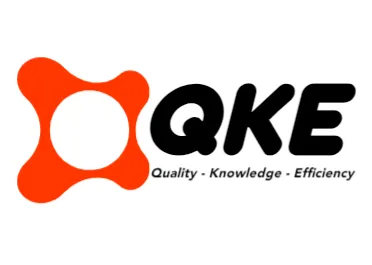Mastering data labeling for machine learning success hinges on precision and quality. Accurate labels form the ground truth for training, directly affecting model performance. Clear guidelines, consistent annotations, and bias mitigation strategies are essential. Advanced tools and AI-assisted pre-labeling streamline workflows, while active learning optimizes human effort. Bias-aware algorithms and diverse datasets ensure fairness. Scalable annotation processes further enhance efficiency. Exploring these elements further can uncover deeper insights into achieving optimal results.
Key Takeaways
- Establish clear annotation guidelines to ensure consistent and accurate data labeling for machine learning models.
- Use active learning to prioritize ambiguous data for efficient human annotation efforts.
- Minimize bias by oversampling underrepresented groups and applying synthetic data augmentation.
- Integrate AI-assisted pre-labeling to reduce manual effort and enhance labeling scalability.
- Monitor progress with real-time dashboards to maintain accuracy and optimize workflows.
Importance of Accurate Data Labeling in Model Training

Why is accurate data labeling considered the cornerstone of effective machine learning model training? Accurate labeling forms the foundation of ground truth datasets, serving as the objective benchmark for training and evaluating models. High-quality labeled data directly influences model performance, enabling algorithms to learn patterns and generalize across diverse scenarios. Poor labels, however, introduce errors and misclassifications, with studies indicating that a 20% error rate can render datasets unusable, severely degrading accuracy.
Moreover, the process must address critical aspects like labeling ethics to ensure unbiased annotations and prevent skewed outcomes. Privacy concerns also arise, as sensitive data must be handled with stringent safeguards to protect user information during labeling. This is especially vital as data labeling supports various industries, enhancing model accuracy in applications like computer vision and NLP model accuracy enhancement. Whether through manual expertise or automation tools, the integrity of labels determines a model’s ability to produce reliable predictions. Thus, meticulous attention to accuracy is indispensable for successful machine learning deployment in real-world applications.
Key Principles for High-Quality Label Creation

How can organizations ensure the integrity of data labeling to support robust machine learning models? A critical approach lies in establishing clear annotation guidelines that define labels, address edge cases, and provide visual examples. Such precision fosters annotation consistency across datasets, reducing ambiguity and classification discrepancies. Training annotators through structured workshops further aligns their understanding, ensuring uniform application of rules.
Equally vital is robust quality assurance, incorporating error detection through double-checking and random sampling to validate accuracy. Cross-checking among annotators and tracking error rates enable swift correction of problematic labels. Additionally, prioritizing data diversity ensures representation of real-world variations and edge scenarios, mitigating bias. Continuous learning cycles, supported by real-time feedback and performance metrics like recall and precision, refine processes over time. By adhering to these principles, organizations can achieve high-quality labels, forming a solid foundation for effective machine learning outcomes.
Advanced Techniques and Tools for Efficient Labeling

Building on the foundation of high-quality label creation, organizations can further optimize their processes by adopting sophisticated strategies and technologies for data labeling. Leveraging advanced methodologies like active learning, where algorithms prioritize high-value data points for human annotation, significantly enhances efficiency by reducing manual effort. Additionally, integrating tools with cross tool compatibility ensures seamless annotation consistency across diverse datasets and platforms, such as 2D/3D systems for autonomous driving.
To explore these advancements, consider the following techniques:
- Active Learning Implementation: Select ambiguous data samples for annotation to maximize model improvement with minimal labeling.
- Cross Tool Compatibility Focus: Use interoperable tools to maintain data integrity across multi-dimensional annotation tasks.
- Hybrid Labeling Approaches: Combine semi-supervised and graph-based methods to scale labeling with limited human input.
These strategies, supported by cutting-edge tools, streamline workflows, reduce costs, and uphold precision in preparing datasets for machine learning applications.
Strategies to Minimize Bias in Labeled Datasets

What steps can be taken to ensure fairness in machine learning datasets? Addressing bias in labeled data requires systematic approaches to achieve equitable model outcomes. Techniques such as tracking data demographics and oversampling underrepresented groups help balance class distributions, while synthetic augmentation, using tools like SMOTE or GANs, generates artificial data to fill representation gaps without privacy risks. Bias mitigation also involves stratified sampling to maintain balanced training sets across sensitive attributes.
Additionally, bias-aware algorithms, including adversarial training and reweighting strategies, penalize reliance on sensitive attributes during model training. Post-processing methods, like adjusting prediction thresholds per demographic group, further ensure equitable true positive rates. Data purification through iterative removal of high-bias points and subgroup reweighting refines training sets for fairness. These combined strategies, grounded in rigorous fairness metrics and constraint-based optimization, enable the creation of datasets that minimize disparities and promote unbiased machine learning predictions.
Optimizing Workflow for Scalable Data Annotation

Diving into the realm of data annotation, optimizing workflows for scalability emerges as a critical focus for organizations aiming to handle large-scale datasets efficiently. By integrating automation, such as AI-assisted pre-labeling and automated quality checks, companies can reduce manual effort by up to 50%, ensuring cost effective workflows. Batch processing further enhances scalability by organizing data into manageable groups and prioritizing high-impact subsets for faster model iteration.
Optimizing data annotation workflows with AI-driven automation can slash manual effort by 50%, ensuring scalable, cost-effective handling of large-scale datasets.
To achieve seamless execution, consider these key strategies:
- Leverage AI-driven tools: Automate initial labeling and repetitive tasks to boost annotator productivity.
- Implement batch tracking: Use dashboards for real-time monitoring of progress and accuracy metrics.
- Foster cross team collaboration: Utilize collaborative platforms with real-time feedback to resolve conflicts and maintain consistency.
Advanced tools like multi-object tracking also ensure precision across complex data types, enabling organizations to scale annotation processes while maintaining high-quality outputs.

 Tiếng Việt
Tiếng Việt 日本語
日本語 中文 (中国)
中文 (中国) 한국어
한국어
